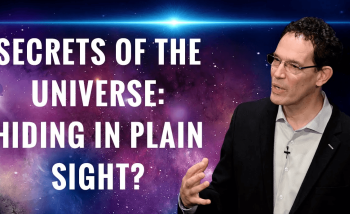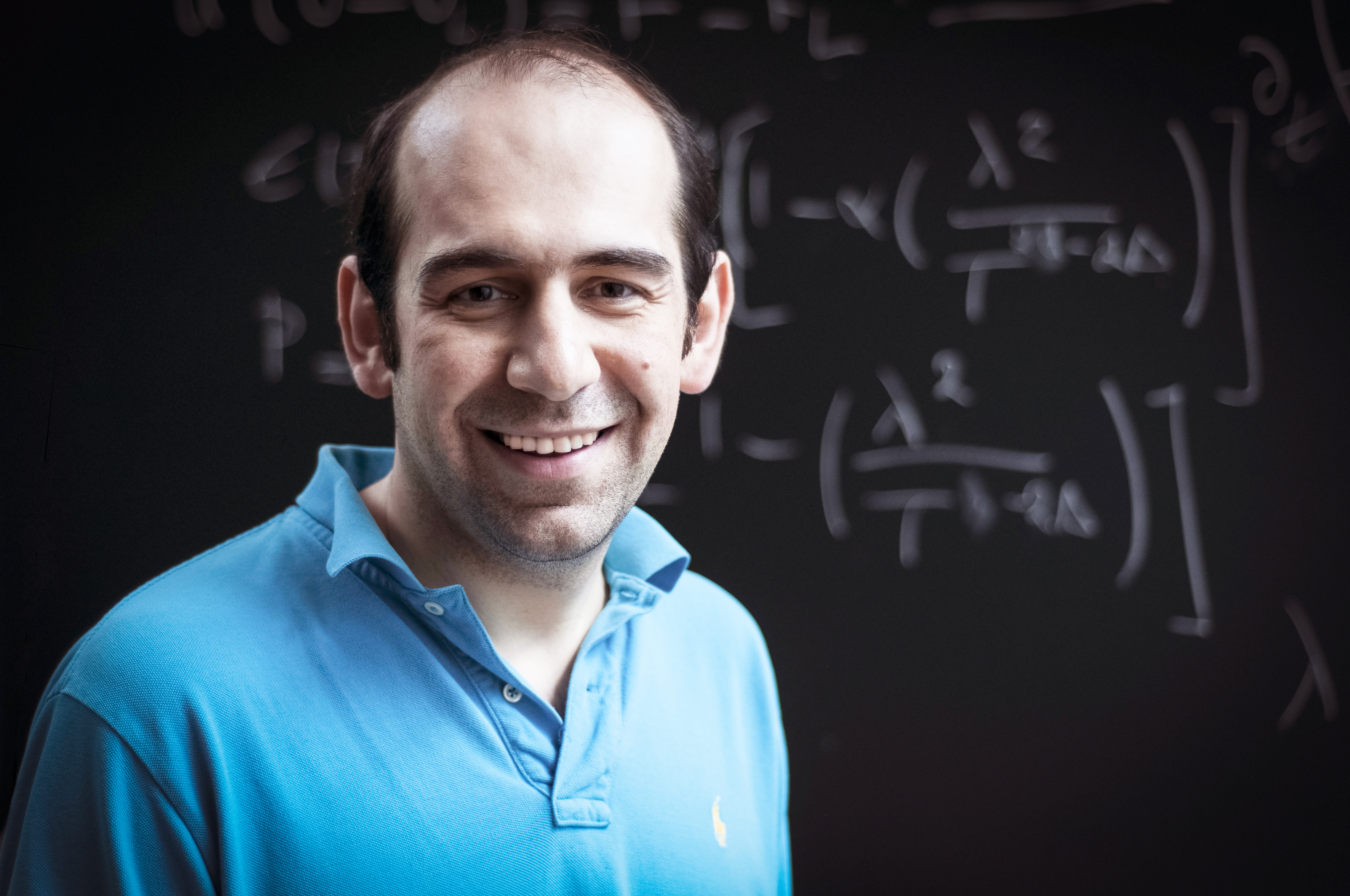For the sixth time in the six-year history of the Buchalter Cosmology Prize, the awards have recognized cutting-edge research conducted at Perimeter Institute.
The prize recognizes “ground-breaking theoretical, observational, or experimental work in cosmology that has the potential to produce a breakthrough advance in our understanding.”
Perimeter Associate Faculty member Niayesh Afshordi was announced this week as a recipient of the award for his paper “Echoes from the Abyss,” which examines a black hole created by the merger of two neutron stars. The Buchalter judging panel called it “a bold and innovative step towards understanding quantum gravitational phenomena.”
In the classical version of Einstein’s general relativity, black holes are surrounded by event horizons — the famous “points of no return” from which nothing, not even light, can escape. However, many aspects of these mysterious phenomena appear not to mesh with quantum mechanics, which describes physics at the particle level. This is why black holes have become “labs,” in a sense, for finding ways to reconcile general relativity and quantum mechanics, the two pillars of modern physics.
The quantum nature of event horizons (which appear to contain all of the information within black holes) is still shrouded in mystery. One branch of research aims to unravel the mystery by studying how ripples of spacetime called gravitational waves might scatter off this quantum structure, leading to delayed repeating “echoes” during the creation of black holes, which can happen after two neutron stars collide.
Afshordi and his co-author Jahed Abedi (Albert Einstein Institute) found the first statistically significant detection of these echoes in gravitational wave data by LIGO (the Laser Interferometer Gravitational-Wave Observatory). The data were obtained one second after LIGO’s first detected merger of two neutron stars on August 17, 2017.
“If correct, this would radically alter the classical picture of black holes and will be the first direct signature of quantum effects in gravity,” said Afshordi.
Afshordi says he had his colleagues dedicate their work to the memories of late scientists Stephen Hawking and Joe Polchinski, both of whom championed the black hole information paradox “and much of theoretical physics as we know it.”
Winning the Buchalter Prize is an honour that Afshordi hopes will be a catalyst for their work to “receive the critical scrutiny that it deserves from the community.”
Perimeter Visiting Fellows Eugenio Bianchi (Pennsylvania State University) and Hal Haggard (Bard College) shared second prize with collaborators for research testing the Bekenstein-Hawking entropy of black holes.
The annual prize was created in 2014 by Dr. Ari Buchalter, an entrepreneur with a background in astrophysics. It aims to encourage the pursuit of innovative, paradigm-challenging ideas with the potential to advance our understanding of the origin, structure, and evolution of the universe. This year’s winners were announced at the 235th meeting of the American Astronomical Society in Honolulu, Hawaii.
Further exploration
- Read Abedi and Afshordi’s prize-winning paper in the Journal of Cosmology and Astroparticle Physics: “Echoes from the abyss: a highly spinning black hole remnant for the binary neutron star merger GW170817”
- Blog post by Niayesh Afshordi: “Echoes strike back!”
- Astronomy magazine: “Black holes test the limits of Einstein’s relativity”
About PI
Perimeter Institute is the world’s largest research hub devoted to theoretical physics. The independent Institute was founded in 1999 to foster breakthroughs in the fundamental understanding of our universe, from the smallest particles to the entire cosmos. Research at Perimeter is motivated by the understanding that fundamental science advances human knowledge and catalyzes innovation, and that today’s theoretical physics is tomorrow’s technology. Located in the Region of Waterloo, the not-for-profit Institute is a unique public-private endeavour, including the Governments of Ontario and Canada, that enables cutting-edge research, trains the next generation of scientific pioneers, and shares the power of physics through award-winning educational outreach and public engagement.
You might be interested in


Spiralling light from M87’s supermassive black hole reveals strong magnetic fields
November 8, 2023


